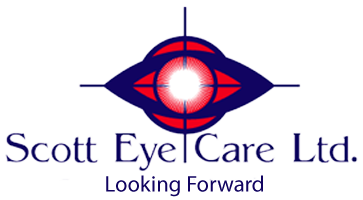
For people with low vision, reading can feel like running a marathon. Many stop reading altogether because what used to be enjoyable and effortless now requires effort and adjustment to using peripheral vision.
Fortunately, there are many low vision devices that can make reading easier and more rewarding for people with glaucoma, retinitis pigmentosa, macular degeneration and other low vision conditions.
Below is a list of low vision magnifiers, aids, devices, and strategies that can help people with low vision read more easily and comfortably.
Low Vision Devices for Reading
Reading Magnifier
The most commonly used visual aid for reading is a hand-held magnifier.
Magnifiers with the appropriate power enable people with low vision to read the text of medicine bottles, food labels and oven dials, among other things. Magnifiers come in a variety of sizes and shapes, including compact pocket magnifiers, full-page illuminated magnifiers, and magnifiers with adjustable supports.
Magnifiers are not well suited for continuous reading, like books or newspapers. They work well for spot reading, like labels, dials and medicine bottles. In general, the larger the magnifier, the less powerful it is. Also, the power markings on the magnifier are not standardized, so two magnifiers both marked “3x” are probably not the same.
It is best to have your low vision optometrist recommend the right magnifier for your needs.
Video Magnifier
While traditional optical magnifiers are generally helpful, some people benefit more from a video magnifier.
A video magnifier, also known as closed-circuit television (CCTV), is a device that uses a camera to send magnified images (up to 50x or greater) to a large desk monitor or television screen.
Video magnifiers have many advantages over optical magnifiers in that they have variable magnification and can improve contrast. However, they are not as convenient as optical devices and are much more expensive.
Portable Electronic Magnifiers
A portable electronic magnifier resembles a tablet or iPad. When holding it in front of your reading material you can see the magnified version of the text on the device's LED screen.
High-Power Reading Glasses
A person with significant visual impairment may be able to use strong magnifying reading glasses to view fine print. These eyeglasses magnify the print size to allow easier reading.
Strong reading glasses or “microscope” glasses are more convenient for continuous reading, like newspapers and books.
Microscope reading glasses require a closer reading distance which does take some adapting. However, they allow much greater comfort and speed when reading for enjoyment.
Tele-Microscopic Glasses
Tele-microscopic lenses are prescription lenses that are installed in a telescope-like device and placed on top of the glasses. They can be prescribed for one or both eyes and enable a person with low vision to read, write, use a computer, and accomplish other activities from a comfortable distance.
Certain low vision devices are custom-made for a patient’s specific needs. A prescription from your eye doctor may be required.
Tele-microscope glasses, or “reading telescopes” afford a much greater reading distance, which some find more comfortable. They are a bit heavier than microscope glasses but are much more versatile in their use.
More strategies to help your reading
Increase Contrast
When reading, it's best to have a sharp contrast between the text and its background. Newspapers, for example, don't have much contrast because the grey characters are set against an off-white background.
Many electronic screens allow users to adjust the contrast according to their preferences, such as black lettering on a yellow background or black lettering against a white background.
Increase Lighting
Increasing the amount of lighting and choosing the appropriate lighting for the setting can considerably improve reading ability and boost comfort. For example:
Direct light - Using an adjustable gooseneck lamp that allows you to focus the light directly onto the reading material can be helpful. We recommend “gooseneck” with lower strength bulbs for better lighting and less heat.
Sunlight - Sitting near a window to get natural sunlight while reading a book or other written text is ideal.
Large-Print Books or Larger Fonts
Large-print books include larger fonts, better contrast and more spacing, making it easier and more enjoyable to read.
Adjust Settings on Your Smartphone
Smartphones feature special settings for people with low vision. These features are wide-ranging and include the ability to select larger lettering to SMS messaging that the phone can read out loud.
Coping with low vision isn’t simple. However, developing your own life hacks and methods can make reading easier. Take your time to find what works best for you. Eventually, you’ll find the best solutions for your specific needs.
Contact Low Vision of Fox Valley to find out which low vision aids and devices are right for you.
Q: What is a low vision exam?
- A: A low vision exam includes components that are not usually part of a standard eye exam. Ronald Weingart, OD will analyze the nature of your vision loss after testing your visual acuity. This will aid the doctor in determining how low vision is affecting you and your ability to perform day-to-day activities. Ronald Weingart, OD will then describe how certain low vision glasses and various low vision aides can help you regain as much daily function as possible.
Q: Does low vision mean blindness?
- A: No. Low vision is vision loss that can't be corrected with glasses, contact lenses or surgery. However, it’s not considered blindness, as some sight remains. This allows a person to still use the sight available and benefit from various low vision devices.
Low Vision of Fox Valley serves patients from Oswego, Naperville, Aurora, and Chicago, all throughout Illinois.

*Saturday hours bi-monthly, please check with office to confirm we are open.